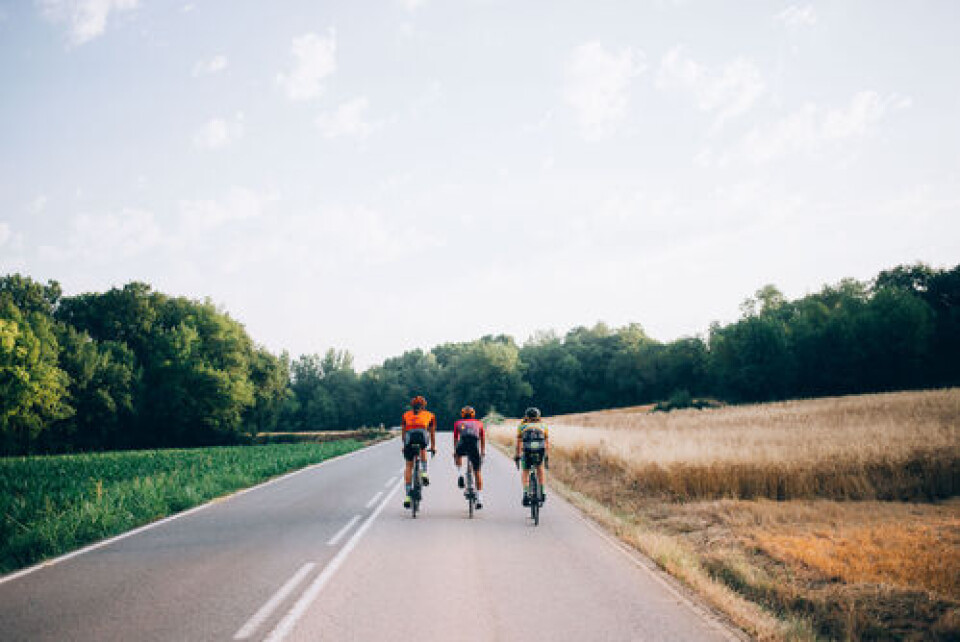-
How many Americans live in Paris - and where else are they choosing in France?
Over a quarter of all US nationals in France live in the capital city
-
Price rises for Netflix in France
The Standard (with ads) and Premium packages are increasing by €24 a year
-
Leclerc supermarkets to sell car fuel at cost price for Easter
The initiative will apply to diesel, petrol, and LPG
30% rise in cyclist deaths in France and countryside is worst
Over the past few years much effort has been put into the cycling infrastructure in many French cities, but not in the countryside

A horrific crash where a drunk driver ran into the back of a group of young bike riders has led to calls for a national discussion on cycling.
The accident, in Brittany in January, saw eight members of a cycling club injured, two of them seriously.
The driver fled the scene but was arrested shortly afterwards.
It coincided with the publication of road accident statistics for 2022, showing a sharp rise in the number of cyclist deaths – up 30% on 2019.
Read more: Call for urgent action after steep rise in cyclist deaths in France
Safety campaigner Teodoro Bartuccio, who founded the Mon vélo est une vie association and who is training some of France’s Olympic cycling hopefuls, reacted by calling for a grenelle de la mobilité (in-depth debate on transport) to decide how to make cycling safer.
Worked hard on cycle lanes in cities, but not countryside
“We have worked hard in Paris and other cities on cycle lanes and it is starting to have an effect, because there are more and more cyclists,” he told The Connexion.
“But out in the countryside it seems that nothing has been done, apart from a few tourist trail initiatives.
Read more: France to spend €43m to improve cycling paths
“The infrastructure is important but so too is training children and adults, and spending more time making people aware of cycling, cyclists and the benefits of using bicycles.”
His association offers a range of support for members, including lawyers to accompany them to court cases arising from accidents.
“For a little while we have had cases where the cyclist explains that they have been a victim of deliberate violence from motorists,” he said.
Car as a weapon
“The typical scenario is that there is a confrontation, often because the car passes too close, words are exchanged, and the driver then turns to come behind the cyclist and knocks them over – using their car as a weapon.
“And the courts do not make a distinction between a driver who knocks someone over by negligence and one who does so deliberately.
This is something the government should change.”
He added that incidents like the one in Brittany will make parents reluctant to let children join cycling clubs.
“How can we reassure them when we know that cyclists are often afraid of being hit from behind?
“Many cyclists and motorists have seen irresponsible behaviour by drivers who do not leave the required space of 1.5m when overtaking.”
Mr Bartuccio said some drivers appear to be aiming for a ‘strike’ (a term used in bowling) against cyclists.
“A grenelle will raise public awareness – we saw it with the environment and we need it for transport too,” he said.
A spokesman for the government’s road safety unit said there was no way of measuring cases of driver aggression towards cyclists.
“We have seen some well-publicised cases in the media but there is no central register of such things that we can consult and verify,” he said.
“Individual cases investigated by police are not correlated together.”
Over the past decade the popularity of cycling has grown considerably in France.
Cycling no long just a sport but part of everyday life
Previously perceived predominantly as a sport, more and more people now use bikes in their day-to-day lives.
This has been helped in big cities by relatively cheap bicycle rental schemes and by more cycle lanes.
Cycle campaigners now differentiate between three main types of cyclist: sport racers, leisure cyclists, and people who use bicycles for transport, usually for trips of five to 10 kilometres.
Some 244 cyclists were killed on the roads of France in 2022, a provisional report published by the national inter-ministerial observatory of road safety (ONISR) shows.
This is an increase of 30% compared to the last pre-pandemic year, 2019.
The Fédération française des usagers de la bicyclette (FUB) says 56% of these deaths occurred on country roads.
It also noted that men aged 55 or older, and cycling in the countryside, made up 38% of total deaths.
By contrast, Paris saw just one death in a cycling accident.
The FUB wants to see at least €2.5billion invested in improving cycling infrastructure over the next five years.
At present, the government has set aside much less for cycling – €200million in 2023 for local authorities that want to build cycle tracks, and €50million to build new, secure bicycle parking areas in towns.
The FUB also wants tougher action by police against drivers who do not respect cyclists or cycle lanes.
Related articles
Nice trials video software to fine drivers who block cycle routes
France confirms €250million investment in push bikes by 2023
New type of traffic light aims to improve cyclist safety in France
























